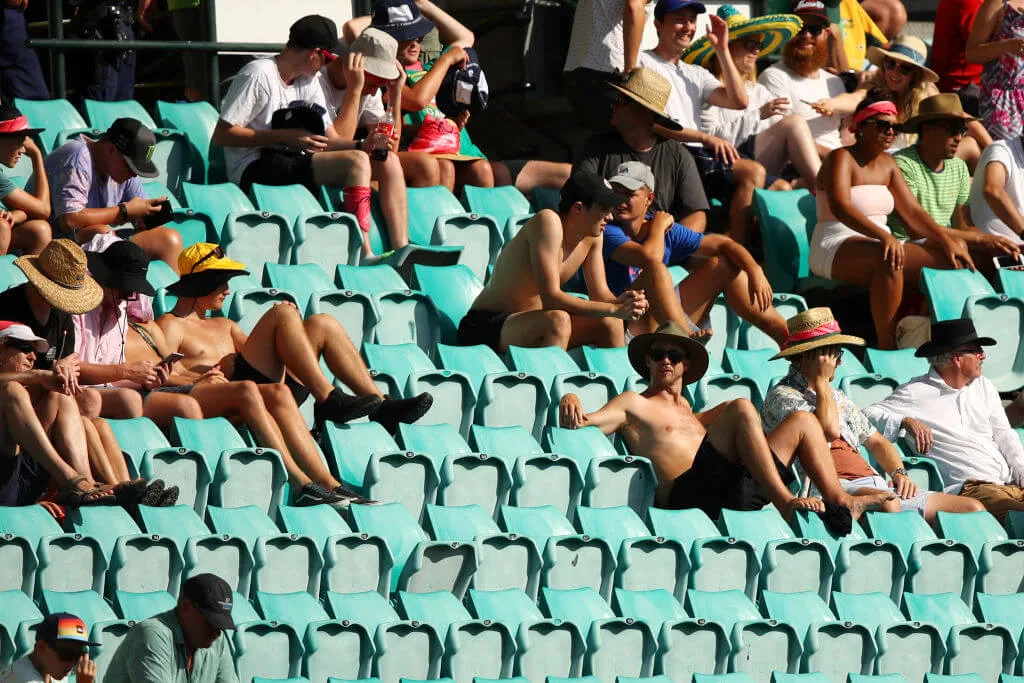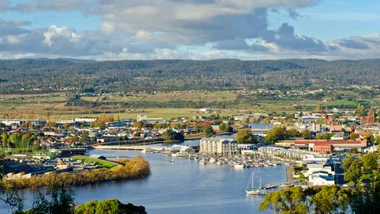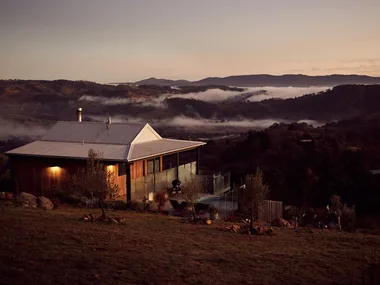What is the hottest day in Australian history? Australia’s hottest day ever was during the Angry Summer, January 7, 2013, where the temperature of the entire country was measured at 40.3C. This broke the previous record for the hottest day in Australia ever, set on December 21, 1972, which saw a temperature of 40.17C.
Meanwhile, the remote outback town of Oodnadatta recorded the highest recorded temperature of any particular place in Australia, measuring a staggering 50.7C on January 2, 1960.
RELATED: 4 of the best summer skin-survival tips
When Does Summer Start In Australia?
Being in the Southern Hemisphere, Australia’s hot season begins in December, with monthly forecasts shifting from cool, wet spring days to long, warm summer days. January is the hottest month of the Australian year.
So when does summer end? Australian summers end in February, with March seeing the beginning of autumn.
The Angry Summer
It’s no surprise that the hottest day in Australian history happened in the summer of 2012-2013. This record-breaking summer is called the Angry Summer or the Extreme Summer, not just because of heatwaves and bushfires, but also because of intense rainfall and flooding.
Every Australian state and both territories saw record temperatures, with average temperatures skyrocketing all over the country. From January 2-8, 2013, the average maximum daily temperature for the whole of Australia was over 39C.

New South Wales
In Sydney, temperatures reached a high of 45.8C during the Angry Summer, breaking the previous record of 45.3C recorded in January 1939. Through the greater Sydney area, more temperature records were broken, with 46.1C in Bankstown, 45.5C in Parramatta North, and 46.4 at Sydney Airport.
Queensland
The state of Queensland is big enough to experience different climate zones, with drier summers in the south and wetter summers in the north, which has a subtropical climate. This extreme humidity brought about the worst floods in recent memory to Queensland during the Angry Summer.
However, because the Angry Summer’s monsoon rains brought an early end to the dry season over Queensland, the hottest day in Brisbane’s history did not occur during this period. Instead, a temperature of 43.2C was previously recorded in the city on Australia Day, 1940.

South Australia
The Angry Summer was one of the driest summers in decades for South Australia, with Adelaide reaching 45C for only the fourth time in its entire history. On January 4, 2013, Adelaide airport measured its highest temperature on record at 44.1C.
Further north and inland from Adelaide, the remote outback town of Oodnadatta broke a record by having 46 consecutive days above 35C, from December 27, 2012, to January 26, 2013. Oodnadatta is famous for having the highest recorded temperature in Australia, measuring a mindblowing 50.7C on January 2, 1960.
Western Australia
The highest temperature recorded in the city of Perth was 46.2C on February 3, 1991, but the hottest temperature ever in the state, 50.5C, was recorded much further north, in the pastoral lease of Mardie Station.
Tasmania
Tasmania usually has mild summers compared to the rest of Australia, but this didn’t stop the island state from experiencing its hottest summer in decades during the Angry Summer. Hobart had its highest recorded temperature on January 4, 2013, at 41.8C, the second-hottest temperature ever recorded in the state.
The hottest temperature in Tasmania was recorded during a previous heatwave, in 2009. The town of Scamander, on the north-east coast of Tasmania, recorded a temperature of 42.2C on January 30, 2009, when a heatwave hit southeastern Australia.
Victoria
Victoria was also hit by the 2009 heatwave. The highest maximum temperature ever recorded in this small state was 48.8C, in the town of Hopetoun, on February 7, 2009.
Despite being the wettest Australian state after Tasmania, it is not immune to brushfires during the summer. During the Angry Summer, major fires broke out throughout the state, threatening homes in Melbourne’s northern suburbs.
ACT
The hottest temperature ever in the Australian Capital Territory was recorded on January 11, 1939, at 42.8C, with temperatures in Canberra reaching 42.5C. The ACT has a relatively mild and wet summer with a few occasional hot and dry days.
However, Canberra set a record 42C maximum temperature for January during the Angry Summer, beating the previous record set in 1968. It seems like those occasional hot and dry days are becoming more common for the capital city.
Northern Territory
The Northern Territory has a tropical northern climate zone and a desert climate zone to the south. The southern zone, which includes Alice Springs and Uluru, lies in the desert centre of Australia, and it is this part of the territory that experiences the hottest days.
Aputula, an Aboriginal community south of Alice Springs, had the hottest temperature in the territory on January 1-2, 1960, registering a high of 48.3C.
Hotter And Hotter
Many individual temperature records were broken over the summer of 2018-2019. According to the Bureau of Meteorology, the temperatures recorded in the Angry Summer of 2012-2013 were exceeded by nearly an entire degree.
In fact, January 2019 set new records as the new hottest month in Australian history, with the country experiencing three of its five warmest days in that month alone.
Record Breaking Heatwaves
As long as climate change continues, the hottest temp in Australia will keep rising. Scientists warn that it is not the warmest days that we should be paying attention to, but the long, unbroken runs of hot days that can cause the most problems.
RELATED: Anti-Aging Tips For Summer










